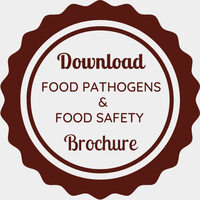9th International Conference on Food Pathogen and Food Safety
Paris, France

Dr. Janyce Franc
General manager & co-founder, Sterixene
Title: Pulsed UV light for bacterial reduction: Impact of physical parameters on Aspergillus brasiliensis
Biography
Biography: Dr. Janyce Franc
Abstract
Foodborne illnesses related to the ingestion of pathogenic microorganisms remain a major cause of morbidity encountered worldwide, with 420 000 deaths each year. To ensure food safety, several processes have been developed to reduce the microbial load of food: thermal, chemical and athermal treatments. With regard to the latter, the use of mercury-based UV for bactericidal action was demonstrated by Bedford (1927) and Gates (1929). Pulsed Light technology was developed in Japan in 1980 and has highlighted the germicidal action of intense light flashes on micro-organisms. This alternative to mercury UV lamps uses xenon gas, which is chemically inert, more environmentally friendly, and more effective. The bactericidal activity of the broad light spectrum (200-1300 nm) is based on its absorption by the DNA double strand, which causes a break in the DNA and the formation of thymine dimers making bacterial replication impossible. Pulsed Light has been shown to be effective on reference micro-organisms for UV decontamination, such as the mould Aspergillus brasiliensis DSM 1988, and other micro-organisms commonly found in the food industry. While many scientific papers have reported on the performance of Pulsed Light, few have highlighted the impact of physical parameters of the light on microbiological activity. This study proposes to establish a parallel between two sciences, that of life and that of physics.
Methods:
Two Pulsed Light devices were used in this study:
• A xenon Pulsed Light device with a lamp patented by the Sterixene company. The frequencies of use range from 0,1 to 7Hz maximum. This device allows the emission of flashes at a voltage of 1500 to 2800V, for a plasma length of 150 mm.
• A high frequency xenon Pulsed Light device, with a voltage varying from 400 to 1000V. The applicable frequency is linked to the voltage used. For 1000V, the maximum frequency is 50Hz; for 400V it is 350Hz. The plasma length is a few millimeters.
The physical parameters directly impacting the decontamination efficiency studied here are the distance of the matrix from the optical source, the applied voltage, the number of flashes or treatment duration, the frequency, and the inoculum concentration.
Tests were conducted on PA66 UV Bio-indicators, which consists in a 15x20 mm coupon on which 100μL of a suspension of spores is deposited in one drop (patented concept). The coupon is then dried for several hours under a microbiological safety post. Bio-indicators are enumerated by inoculum recovering with a sterile swab and successive dilutions in Trypton-Salt solution. The decontamination efficiency is determined with the log reduction of the treated samples (in triplicate) compared to an untreated control sample. All tests were performed on a dry inoculum of Aspergillus brasiliensis which is the reference mould for UV decontamination and considered the most UV-resistant germ.

